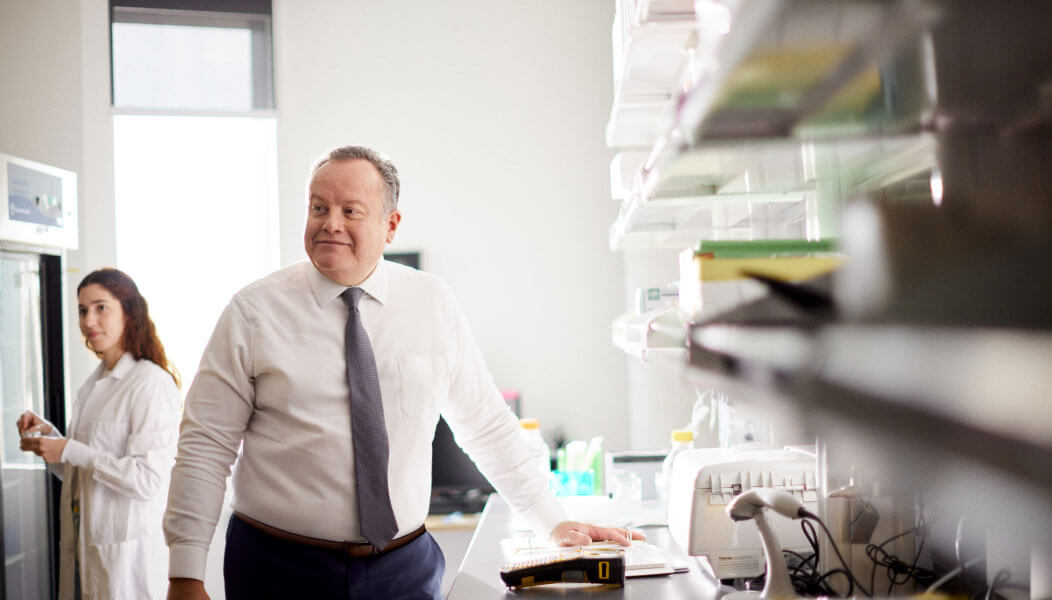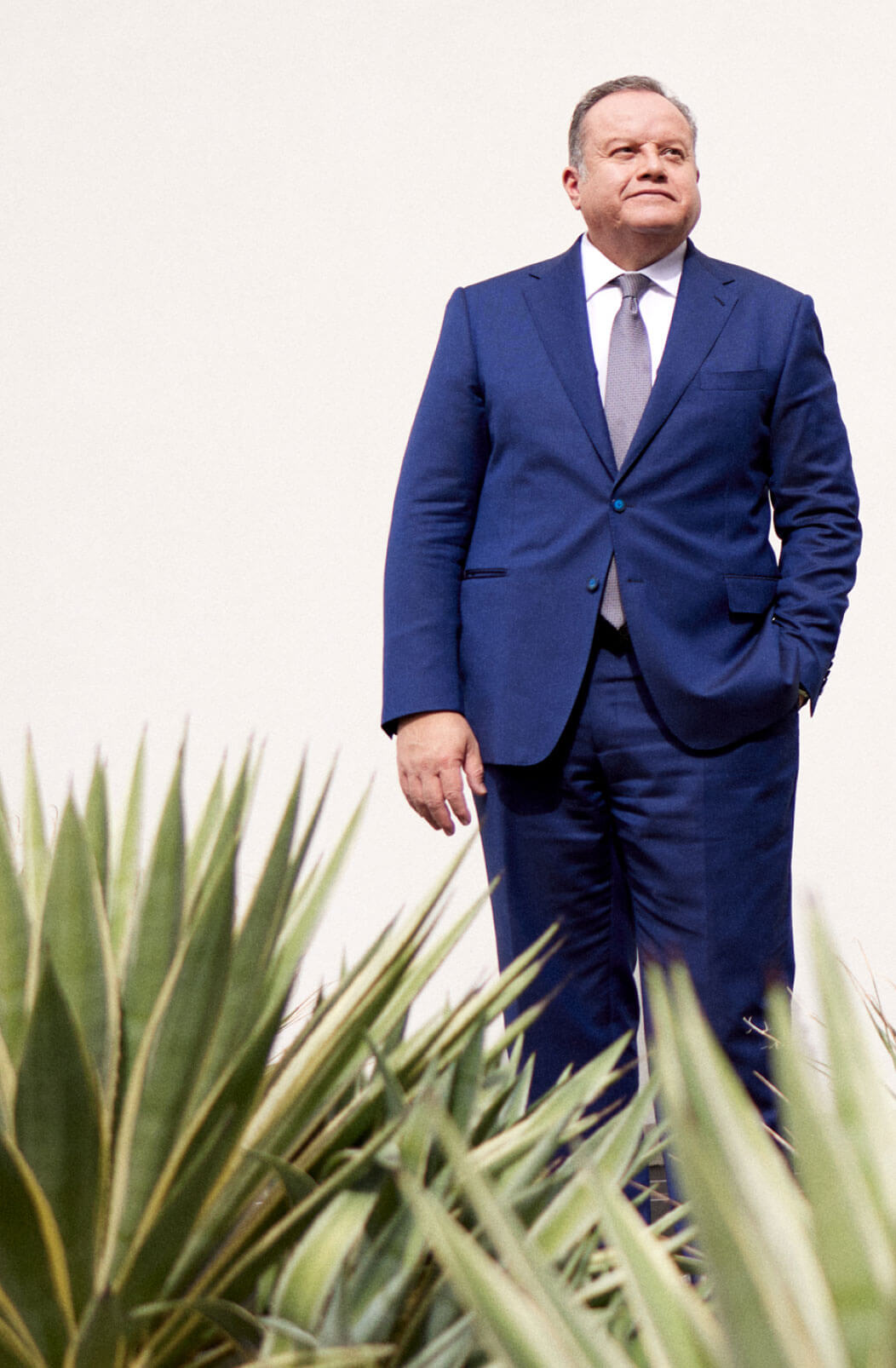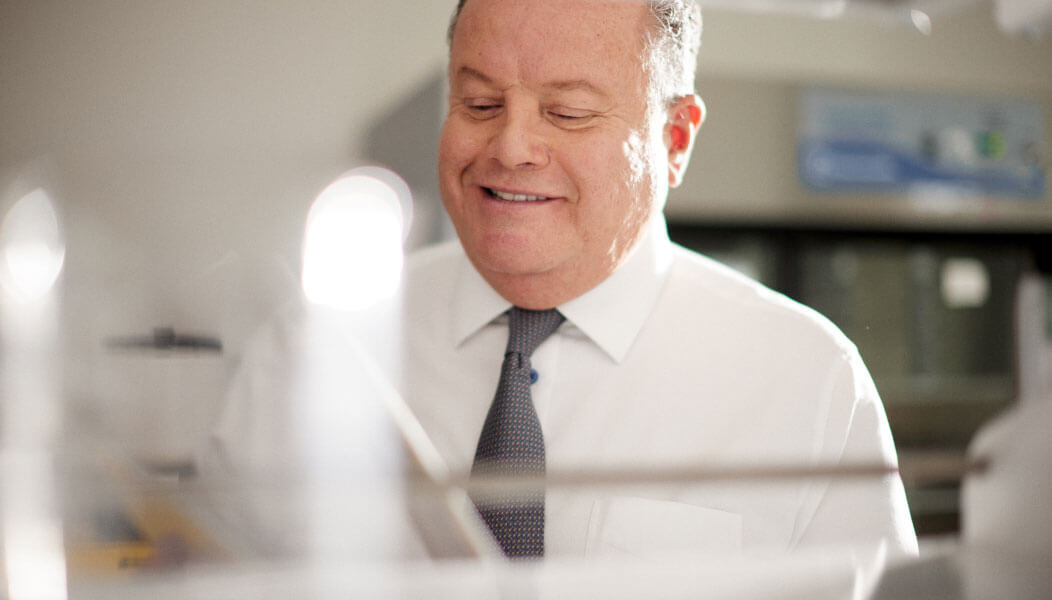Growing up in Mexico City, Dr. Fonseca thought he would someday become an actuary. “I was very good at math,” he says. “I could always finish my math exams quickly. I never struggled with homework, and I could see an easy life in my future.” But one day, when he was 17, he had an accident.
“I fell off a ski boat and became tangled in the rope,” he says. With severe cuts on his arms and legs, he was eventually stabilized after a 12-hour surgery. He doesn’t remember much about his first few days of recovery, except being impressed by the physicians and nurses. “I was truly grateful,” he says. “I thought to myself, maybe someday I could be on the other side of that. And that’s how I decided to become a doctor.”


It was during this time in the hospital that Dr. Fonseca felt a connection with his caregivers. “They gave me their full attention in that moment. Because for me, that moment was incredibly unique. To this day it permeates everything I do in the clinic,” he says. And while Dr. Fonseca says he doesn’t necessarily believe in fate, “I vividly remember right before the accident I told myself, you shouldn’t be here. Had I followed that, I’d probably be an actuary somewhere. It may sound bizarre, but I’m almost grateful because it led me to where I am now.”
And Dr. Fonseca says he loves where he is now, having helped build Mayo Clinic in Arizona into one of the world’s preeminent cancer research centers. “When I Ieft Rochester for Phoenix, I was able to start the program here to treat multiple myeloma,” he says. “I developed the lab and brought along the grants that came with the lab. And shortly after that, I was able to recruit several notable individuals. We were just getting started, but those individuals saw where we were headed. And they, in turn, became inspiration for other individuals in our research efforts. We grew from that small group to a nationally ranked comprehensive cancer center.”

As physicians, we’re thrown into the arena and have to innovate every day.”
Mayo Clinic Comprehensive Cancer Center is a world-class leader in research, education, and patient care with an innovative spirit at its core. “I’ll give you an example,” says Dr. Fonseca. “We have patients here that we treat for a condition called amyloidosis, a rare disease where a certain protein builds up in the organs, interfering with their normal function. Those patients are traditionally treated through a bone marrow transplant. And we had a patient who could not go through a bone marrow transplant. At that point, our options were bone marrow transplant or do nothing.”

“So we decided, let’s try something in between,” he says. “Something we were using for myeloma. We had no clinical trial, but this person clearly needed treatment. Ultimately, the treatment was successful. As a consequence, clinical trials were developed and now that therapy has become the standard treatment for amyloidosis. Those are some of the challenges in medicine. It’s often difficult to explain because of the nuances of how we practice, and how we have to be very protective of patients’ outcomes. As physicians, we’re thrown into the arena and have to innovate every day.”
What does Dr. Fonseca see for the future of Mayo Clinic? “I would love a future where other physicians, other academic institutions, the private sector, including biotech and manufacturing companies, think about a partnership with Mayo Clinic,” he says. “And think about it as one of the fastest, most productive, most valuable ways their products can be advanced in a way that ultimately benefits patients. I would like for people to think of Mayo Clinic as a nimble and creative partner, tolerant of the risks that come with innovation. Again, with the core mission of advancing the care for patients.” How does Dr. Fonseca plan to achieve all this? “I can be very persuasive,” he adds with a smile.
Having authored over 370 medical articles, and cited over 60,000 times, a large part of his career is dedicated to research. “I’ve been fortunate that some of the research I have participated in has changed the course of what we do for the treatment of multiple myeloma,” he says. And when Dr. Fonseca looks ahead to his calendar, his favorite days are the ones where he sees patients.
I would like for people to think of Mayo Clinic as a nimble and creative partner, tolerant of the risks that come with innovation.”
“When I’m with a patient discussing treatment options and how we can individualize therapy to maximize the best outcome, that’s when I feel that connection and where I find the most meaning.”